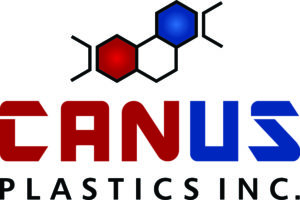Creating Effective Safety Barriers for COVID-19

Safety barriers have become essential in reducing virus transmission in places like offices, schools, and public areas. These physical barriers act as shields, limiting how germs spread between people. They help keep everyone safe while maintaining social interactions, which are important in daily life.
Choosing the right materials for these barriers ensures they’re strong and long-lasting. Acrylic and polycarbonate are popular choices due to their durability and transparency. Using advanced technologies like CNC machining and vacuum forming can enhance the design and fit of these barriers, allowing them to blend seamlessly into their surroundings.
Designing and placing barriers correctly is crucial to their effectiveness. Factors like height, width, and location all play a role. Thoughtful design ensures barriers provide protection without obstructing movement or visibility. Regular cleaning and maintenance also keep barriers in good shape, ensuring they remain effective over time. This guide explores the key aspects of safety barriers, helping you make informed decisions for your space.
Importance of Safety Barriers for COVID-19
Safety barriers have become essential tools in combating the spread of COVID-19. These barriers play a significant role in reducing virus transmission by providing a physical shield that blocks airborne droplets. They serve as an extra layer of protection when social distancing and masks are in place, minimizing the risk of infection in both public and workspaces.
Benefits of Physical Barriers:
– Separation: They help maintain distance between individuals, reducing the chance of virus spread in crowded areas.
– Visibility: Clear barriers allow communication and visibility while maintaining safety, ensuring that face-to-face interactions can continue safely.
– Adaptability: They can be easily repositioned or adjusted according to the layout of the space or specific needs.
Key Features of Effective Safety Barriers:
– Durability: Using strong materials ensures the barrier can withstand frequent use and cleaning.
– Transparency: Clear materials like acrylic provide unobstructed views, maintaining interaction between people.
– Stability: A well-designed barrier remains stable, even in high-traffic areas or when occasionally bumped.
By integrating these features, safety barriers effectively enhance the defence against COVID-19, making them indispensable in today’s health-focused environments.
Materials and Technologies for Building Barriers
Building effective safety barriers requires choosing the right materials and employing advanced technologies. Acrylic and polycarbonate are popular choices due to their durability and transparency. Both materials provide a clear view while offering sturdy protection, making them suitable for various settings.
Overview of Materials:
– Acrylic: Known for its clear finish and lightweight properties. It offers excellent scratch resistance, making it ideal for areas where minor impacts are frequent.
– Polycarbonate: Offers greater impact resistance than acrylic, suitable for environments where more substantial interaction might occur. It is ideal for high-risk areas due to its toughness.
Enhancing Barrier Design with Technology:
– CNC Machining: This technology enables precise cuts and shapes, allowing for custom barrier designs that fit specific needs.
– Vacuum Forming: This process moulds materials into desired shapes, creating sturdy and tailored barriers that suit different spaces.
Comparing Materials:
– Durability: Polycarbonate outperforms acrylic in impact strength, but acrylic is more scratch-resistant.
– Transparency: Both materials offer clear visibility, but acrylic maintains higher optical clarity.
– Weight: Acrylic is lighter, making it easier to handle and install, while polycarbonate offers robust protection.
Selecting the right material and using innovative technologies can significantly enhance the effectiveness and aesthetic appeal of safety barriers, ensuring they serve their purpose without compromising on clarity or security.
Design Considerations for Optimal Barrier Placement
Designing and placing safety barriers require a careful approach to ensure maximum effectiveness. Barriers must be strategically placed to create a safe environment without disrupting daily activities.
Factors to Consider When Designing and Placing Barriers:
– Height and Width: Barriers should be tall enough to prevent direct exposure to airborne particles while allowing visibility.
– Openings: Incorporate access points for money transactions or document exchanges, keeping user convenience in mind.
– Material: Choose materials that blend with the surroundings while maintaining transparency and durability.
Tips for Integrating Barriers Into Various Environments:
– In offices, position barriers between desks to create individual workstations.
– Use portable barriers at events to create temporary separation between groups.
– In retail, install barriers at checkout counters to protect both staff and customers.
Ensuring Accessibility and Functionality While Maintaining Safety:
– Design barriers to allow easy access for cleaning and maintenance.
– Ensure that emergency exits and access for people with disabilities remain unobstructed.
– Consider modular designs that can be reconfigured or removed as needed to accommodate changing environments.
Maintenance and Care of Safety Barriers
Regular maintenance keeps safety barriers effective and extends their lifespan. Proper care includes routine cleaning, inspections, and timely repairs to ensure they remain sturdy and clear.
Cleaning and Maintaining Barriers for Longevity:
– Use non-abrasive cleaning agents to avoid scratching or clouding the surface.
– Regularly wipe down barriers to remove dust, fingerprints, and other residues.
– Perform thorough cleanings weekly or more frequently in high-traffic areas.
Quick Tips for Repair and Upkeep to Ensure Effectiveness:
– Inspect barriers regularly for cracks, chips, or signs of wear.
– Promptly repair any damage using suitable materials and adhesives.
– Align panels correctly to prevent gaps that could compromise safety.
Importance of Regular Inspections to Meet Safety Standards:
– Schedule monthly inspections to catch any issues early.
– Ensure all hardware like screws and fittings are secure and intact.
– Regular inspections ensure barriers continue to comply with safety regulations.
Conclusion
Creating secure and effective safety barriers involves thoughtful design, the right materials, and regular maintenance. Each aspect contributes to a safer environment, whether in workplaces or public spaces. With careful planning, barriers can provide the necessary protection while being functional and easy to maintain.
Canus Plastics Inc. specializes in crafting high-quality safety barriers tailored to your needs. With our advanced machinery and expert craftsmanship, we ensure that every barrier is built to withstand and protect. Connect with us today to explore how Canus Plastics Inc. can enhance the safety of your space.

